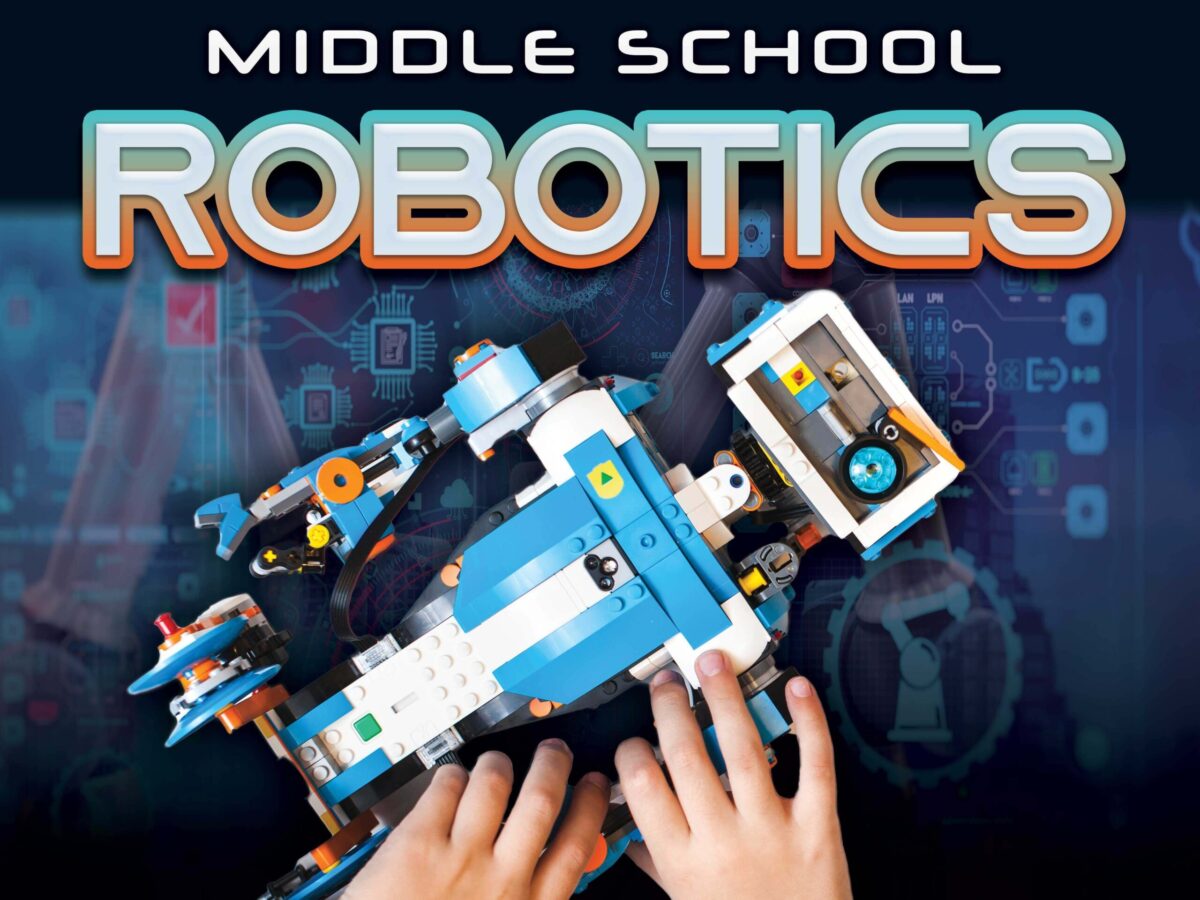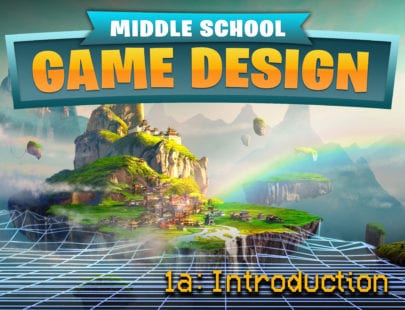
Middle School Robotics 1a: Introduction
If you love the idea of identifying and solving problems through machine technology, then engineering may be the perfect profession for you! In this course, you’ll learn about the types of engineers and engineering activities that are involved in designing robots. You’ll explore the design process, models and software engineers use, careers in engineering and robotics, and more! You’ll also use Micro:bit- a powerful pocket-sized computer- to enhance your learning! Let’s get ready to think like an engineer!
Units at a Glance
Unit 1: Engineers to the Rescue
You have probably heard of engineering as a career. But what exactly does an engineer do? Do they just draw pictures of bridges and use lots of math? And how long have there been engineers in society? In this unit, you’ll learn about the engineering career and exactly what engineers do. (Hint: They don’t just draw pictures!) You’ll also learn about the history of engineers, some of the different areas they work in, and the other professionals they work with.
After studying this unit, you will be able to:
- Identify engineers as problem solvers and describe the development of engineering through history
- Classify different types of engineers and the tasks they work on
- List some of the tasks engineers complete as part of their routine
- Describe how engineers work with other professionals in engineering, STEM, and other fields
Unit 2: Tools of the Trade
Problem-solving is a tricky business. An engineer can’t just rely on their brains and past projects to get by. They must also learn how to use tools and models. Each tool probably has its own set of safety instructions. So, before an engineer can really get to work, they need to know what tools are good for the job and how to use them properly so that the engineer doesn’t get hurt.
After studying this unit, you will be able to:
- Classify the types of tools an engineer might use in their job
- Use various forms of technical drawings to share ideas
- Build a physical or digital model to test an idea or share a design
- Summarize safety procedures and discuss ethics in technology
Unit 3: Time to Get Complex
We describe processes or things as “complex” when they are challenging to understand. But what makes us feel that a complex thing is challenging? Sometimes, it has to do with how many different parts the object or problem has. The more things we have to wrap our minds around to comprehend, the more our minds get put to work. And lots of work feels challenging! How do engineers handle all the details of their complex problems? Let’s find out.
After studying this unit, you will be able to:
- Describe and define different types of systems
- Summarize the parts of a control system and explain each step
- Classify simple machines that exist in everyday mechanisms
- Provide measurements for a component and describe the purpose of schematics
Unit 4: What’s Your Problem?
Problems are everywhere, and solving them is challenging, but if you have a specific process that you follow for every new project, it makes things a lot easier. The engineer’s design process does just that. It is a roadmap for helping engineers tackle and solve the problems they take on.
After studying this unit, you will be able to:
- Describe how an engineer defines a problem, as well as the criteria and constraints used to solve a problem
- Identify the steps in designing and building a solution to a problem
- Summarize the importance of evaluation in the engineering design process
- Recite and define the steps of the engineering design process
Unit 5: The Ins and Outs of Computers
In today’s digital age, computers are integral parts of our daily lives. From the smartphones we carry in our pockets to the laptops we use for school or work, computers are everywhere. In this unit, we’ll explore the basics of computers, how they are used in engineering and robotics, and how to be safe and ethical when using them.
After studying this unit, you will be able to:
- Define the basic parts and components that make up a computer system
- Summarize how an engineer uses computers to solve problems
- Describe the relationship between computers and robotics
- Demonstrate how to use a computer safely and ethically
Unit 6: Everyday Engineering
We have already learned about the tools and processes that engineers use, so in this unit we’ll look at some other skills engineers need, like collaboration, data management, and word processing skills. Then, we will wrap up this course with a final lesson on the skills necessary for a career as an engineer and explore what attributes you have that might make engineering a good career choice.
After studying this unit, you will be able to:
- Discuss how society determines some of the projects that engineers work on
- Identify how writing is used in the engineering field and the attributes of technical writing
- Describe why data is important in engineering and how spreadsheets and presentation software are employed to share findings
- Explain how to use strengths, weaknesses, and personal interests to explore career
Required Materials
Physical
- Art supplies
- Cardboard
- Digital camera
- Graph paper
- Marbles (2)
- micro:bit v2 GO Bundle ($18.95)*
- Paper
- Paper clips
- Pencil
- Ruler
- Scissors
- Scrap paper
- Tape
- Tape measure
- Video recording device
Software
- Tinkercad (requires login)
- Word processing software
Other
- Helpers (5)
Optional
- Audio recording device
- Compass
- Graphic design software
- Measuring tape
- Meter stick
- Newspaper
- Note cards
- Pen
- Pliers
- Presentation software
- Protractor
- PVC pipe
- Rubber hose
- Stapler
- Staples
- Timer
- Yardstick
*There are many different brand names available, with a wide range of pricing.



